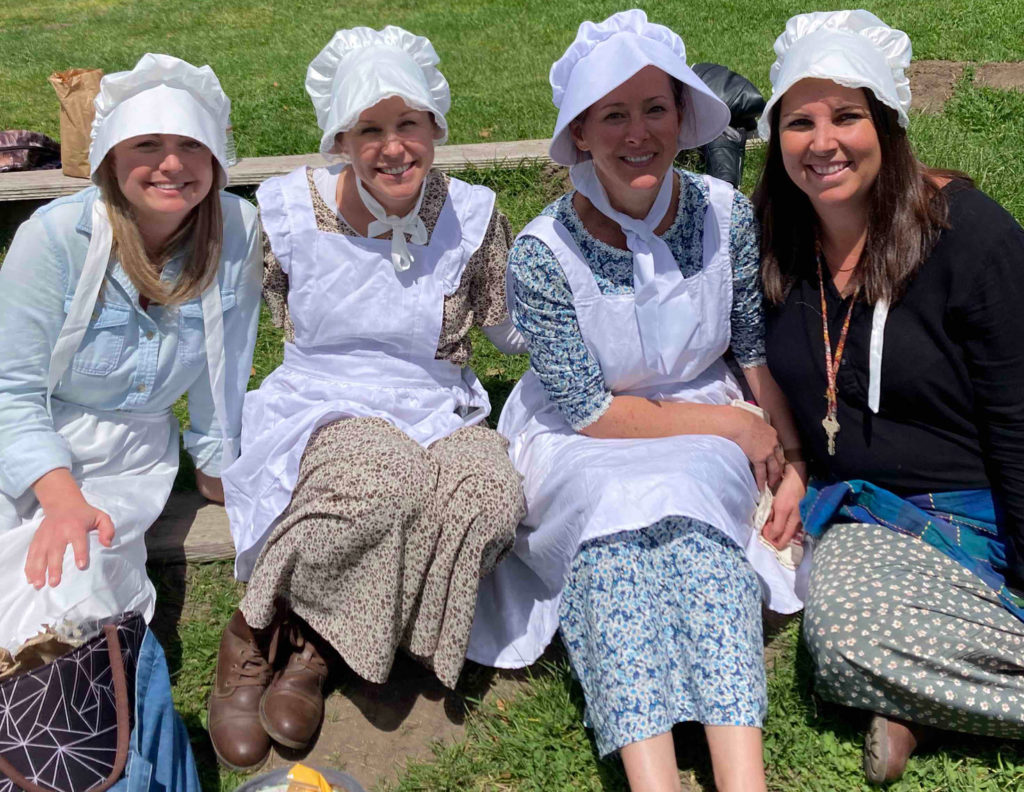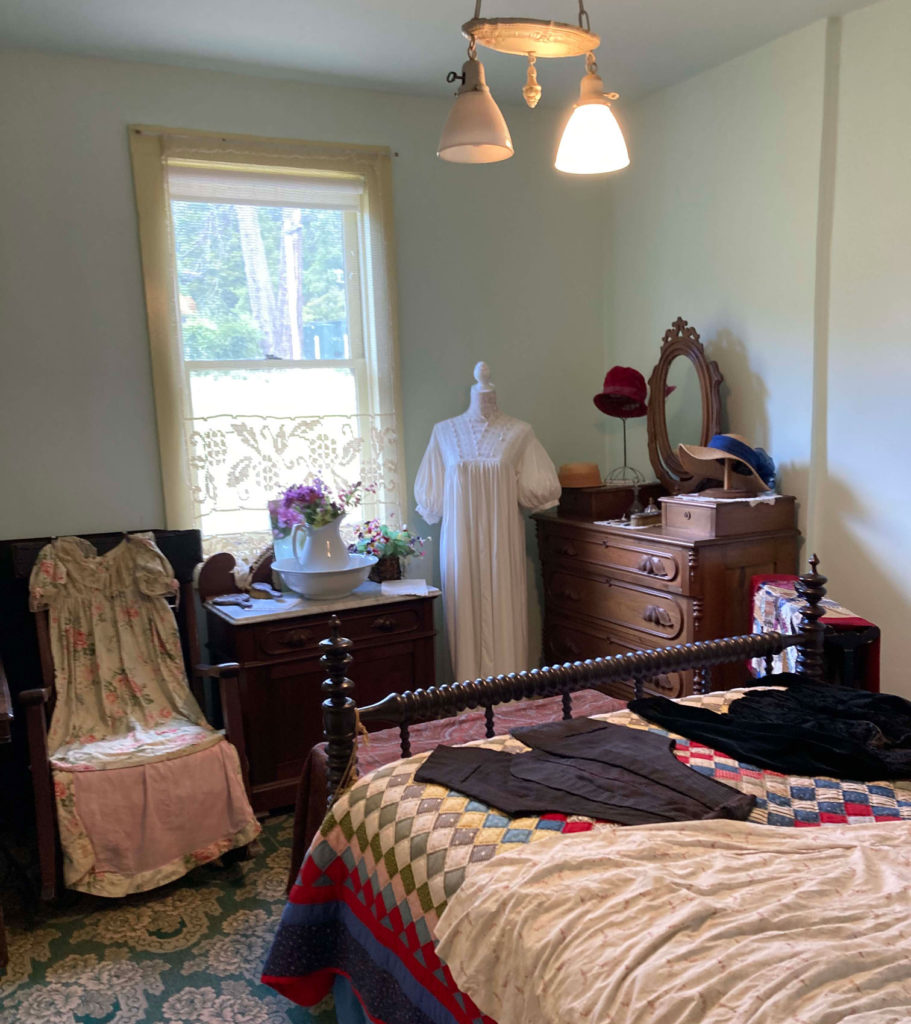
Arjun Thevar, 9, was beaming brighter than the high-noon sunshine.
The Vine Hill Elementary School student had been transported back in time, to the 1800s, as part of a field trip to the Hiram D. Scott house just down the hill from City Hall on April 26.
“I really like it,” he said of the historical reenactments, games and demonstrations that sought to educate the group of third graders on how Scotts Valley came to be.
For years now, the Scotts Valley Historical Society has been walking a cohort of students through an idyllic-seeming time before the emergence of the cell phones, audio/visual tech and social media platforms many locals have had a hand in creating.
Before there could be a Silicon Valley bedroom community, a settlement had to be established.
After touring the Scott house, the first wood-framed one constructed in the area, Thevar seemed to have gotten the message about the significance of it all.
“They were like pioneers in this area,” he said. “And then a bunch of other people started coming.”

His favorite story was the one about Mountain Charlie, the mountain man famous for his rugged, adventuresome ways—although he says he was a little grossed out by the part where they talked about a gruesome injury he sustained.
It was Eric Taylor, garbed in fake bear fur, who gave the most vivid accounts of the Mountain Charlie lore. It was his own great-great-grandfather who was with Mountain Charlie when he got mauled, he said.
While hunting for protein in support of the Westward expansion of settlers, in the 1850s, grizzly attacks were a valid concern, he noted.
Scotts Valley Historian Jay Topping explained how his counterpart in Santa Clara County, William Wulf, had recently told of how it took more than one trip to San Jose and back up to the Santa Cruz Mountains summit to fetch appropriate medical aid.
The first metal plate wasn’t the right size, but despite that misfortune, Mountain Charlie ended up marrying the woman who nursed his wounds, Topping added.

Taylor said his ancestor was left with a Mexican silver dollar implanted into his skull from the ordeal.
He says he only verified his connection to Mountain Charlie’s companion about a year ago with the release of the “The Tragedy of Martina Castro: Part One of the History of Rancho Soquel Augmentation (The Secret History of Santa Cruz County)” by Ronald G. Powell.
“That’s the name of the book,” he said. “My grandfather would never talk about it.”
Taylor, who grew up in Scotts Valley, says the earlier Taylor went from being an undocumented resident in the Summit Road area to a legal one.
“He squatted up there,” he said. “And then he got title to the property.”
Eventually, he was able to purchase 13 plots in the Los Gatos cemetery for 13 gold pieces, he added.

Katie Cardoso, one of the teachers, said the outing was part of the third-grade social studies curriculum theme about life long ago within the local community.
So, while fourth-grade teachers have the benefit of plenty of academic material to draw on (since their studies are supposed to focus more broadly on the state), Scotts Valley teachers rely on community participation to achieve their education aims for this group.
“We build up to it,” she said. “They always do such a great job putting it on.”
And the presentation seems to get better each year, she added.
Amanda Kelly, the parent of 8-year-old Willow Kelly, said it was cool that the kids got to learn about how to make candles and coffee, as well as learning about what life would’ve been like for boys and girls at the time.
“I love that they have different sections here,” she said.
Willow’s friend, 9-year-old Tesla Jacobson, explained how they learned how to play marbles ahead of time, so they could focus on playing during the actual field trip.
“It’s actually pretty fun when you get to know it,” she said.
She’s been coming here for years, but never got to see inside the house until now.
“It was a new experience,” she said. “The beds were so small.”

Her mom, Aimee Jacobson, even wore an outfit that, while it looked modern, wouldn’t have been too out of place a century or two earlier.
“I did try to dress up a little bit,” she said. “It’s nice to be able to see inside the Scott house.”
She said she’d been curious to see if the presenters would say something about the displacement of Native Americans.
“But they didn’t,” she said. “The 1850s was, like, a really hard time for people of color.”
Taylor explained he did have printouts of articles he’d written about “sharks” and “Indians,” though these only contain a couple lines about how the “Indian culture of California was virtually erased overnight” by “diseases, cultural dominance and anti-Indian attitudes.”
Cardoso said that in the past they’d taken students to see First Nations artifacts housed at City Hall, but explained she understood this display to be under construction.
As Debbie Muth, president of the Scotts Valley Historical Society, wandered through the Scotts’ attic, which they use for storage, she said she takes her role as a steward of the past seriously.
“I’m always asking people, ‘You got any pictures to donate?’” she mused, adding they do their best to make Scott’s story as interesting as possible for the kids. “I’m not sure how much it sticks. But we try.”












